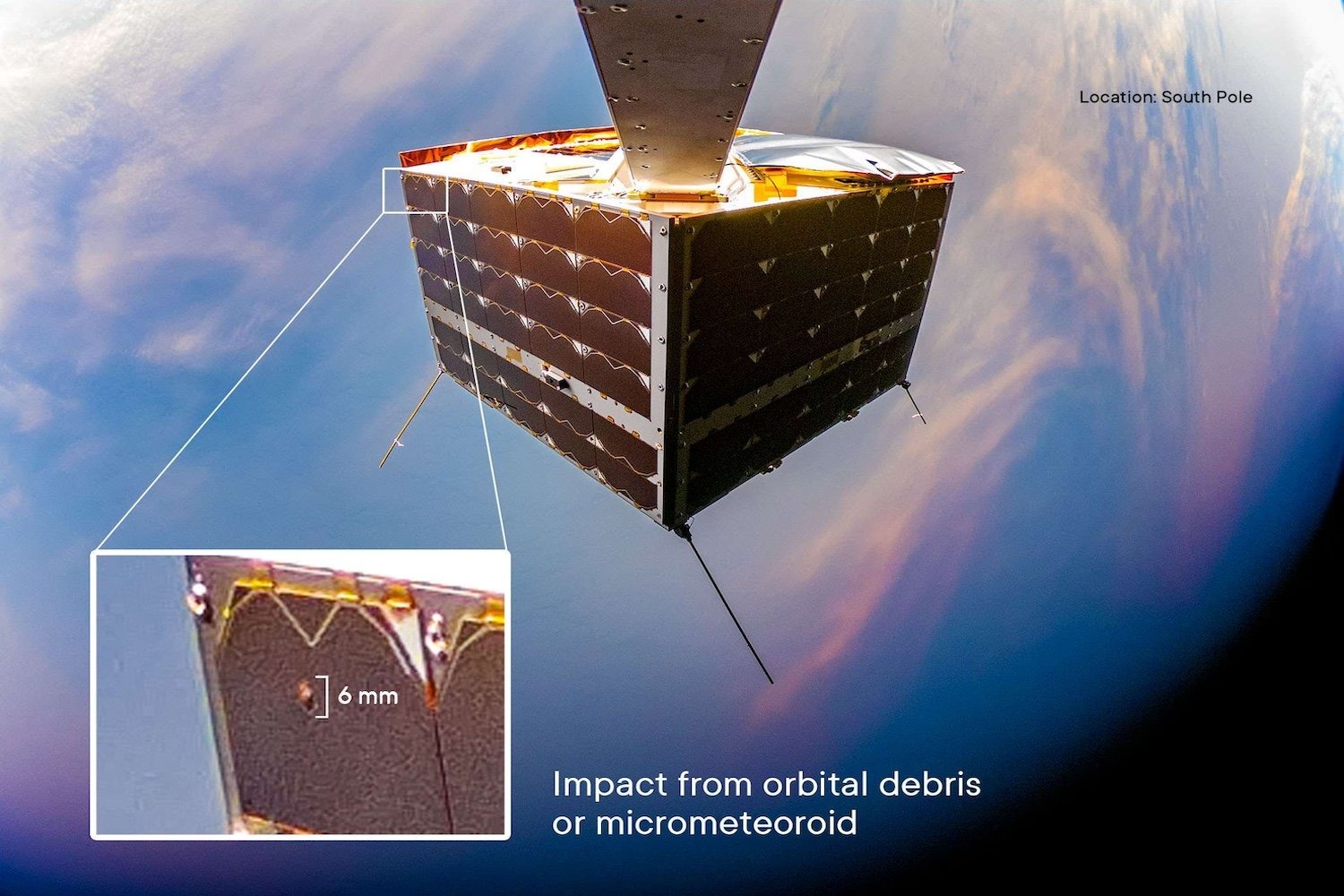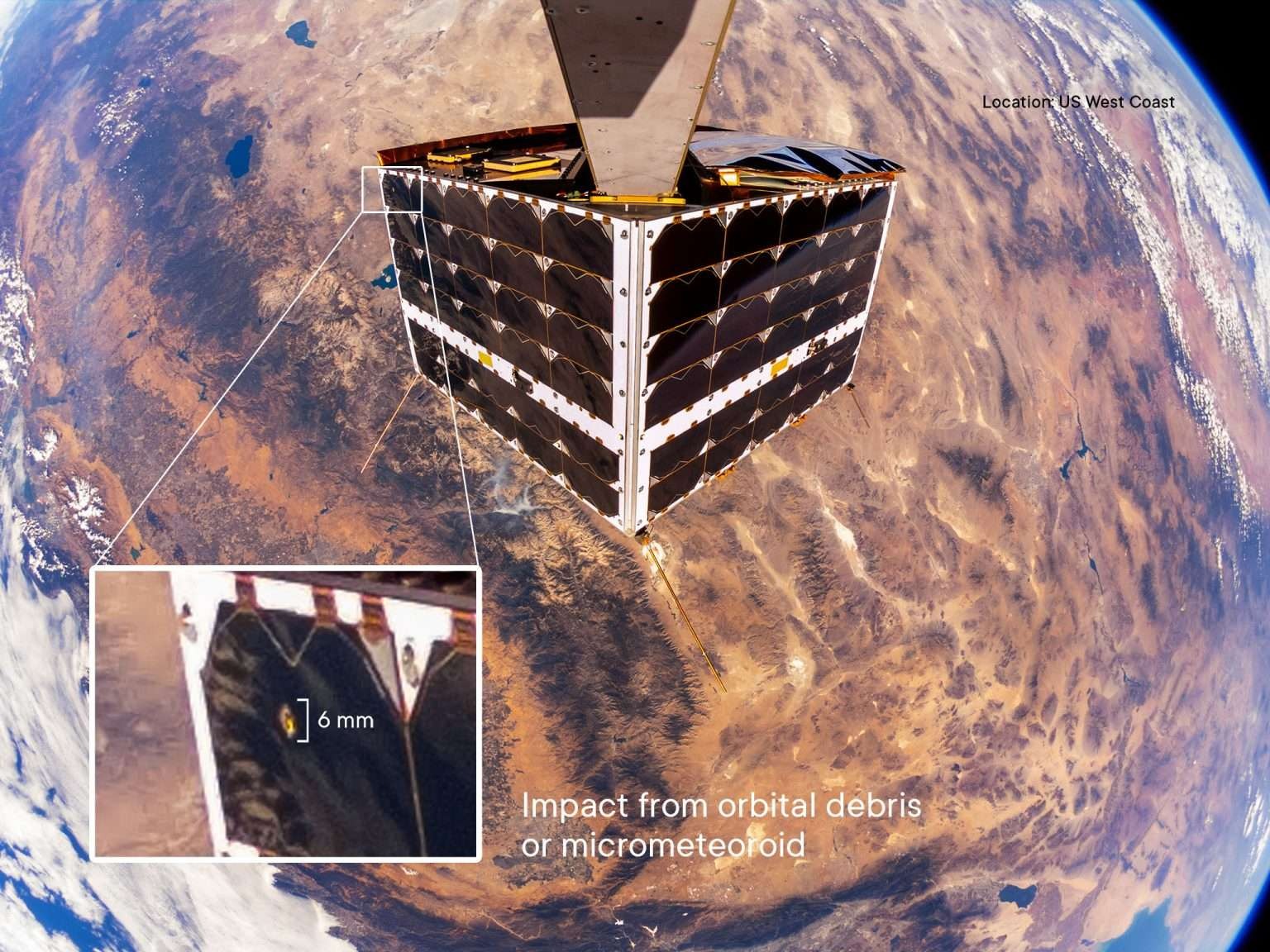Due to the rapidly increasing number of satellites and debris in Earth orbit, outer space becomes more dangerous every year. NanoAvionics recently reported damage to its MP42 satellite, which discovered a hole in the solar panel, measuring approximately 6mm, during another selfie. It probably originated from a collision with space debris or a micrometeoroid, but the exact cause is difficult to determine.

MP42’s last selfies were taken in April 2023, so the damage could have occurred within the last year and a half. Despite the hole in the panel, the satellite continues to operate steadily, and telemetry has not detected any reduction in power generation.

NanoAvionics emphasizes that this case demonstrates the importance of responsible space operations and the development of sustainable satellites, because orbital debris poses a serious threat to other vehicles. The U.S. Defense Department’s surveillance system is now tracking more than 27,000 pieces of debris in orbit, but there are more small fragments that remain undetected.
A communications satellite recently disintegrated in orbit, creating a cloud of nearly 500 pieces of debris. Because of this danger, the International Space Station made 32 maneuvers between 1999 and 2022 to avoid collisions with space debris.
MP42 was launched into orbit in April 2022 on SpaceX’s Transporter-4 program. NanoAvionics satellites are equipped with systems for controlled deorbiting, reducing long-term debris. NanoAvionics calls on other companies to adopt similar technologies for a cleaner space and less chance of accidents.
Earlier we reported on how a Boeing-built satellite crashed in geostationary orbit.
Provided by nanoavionics.com


